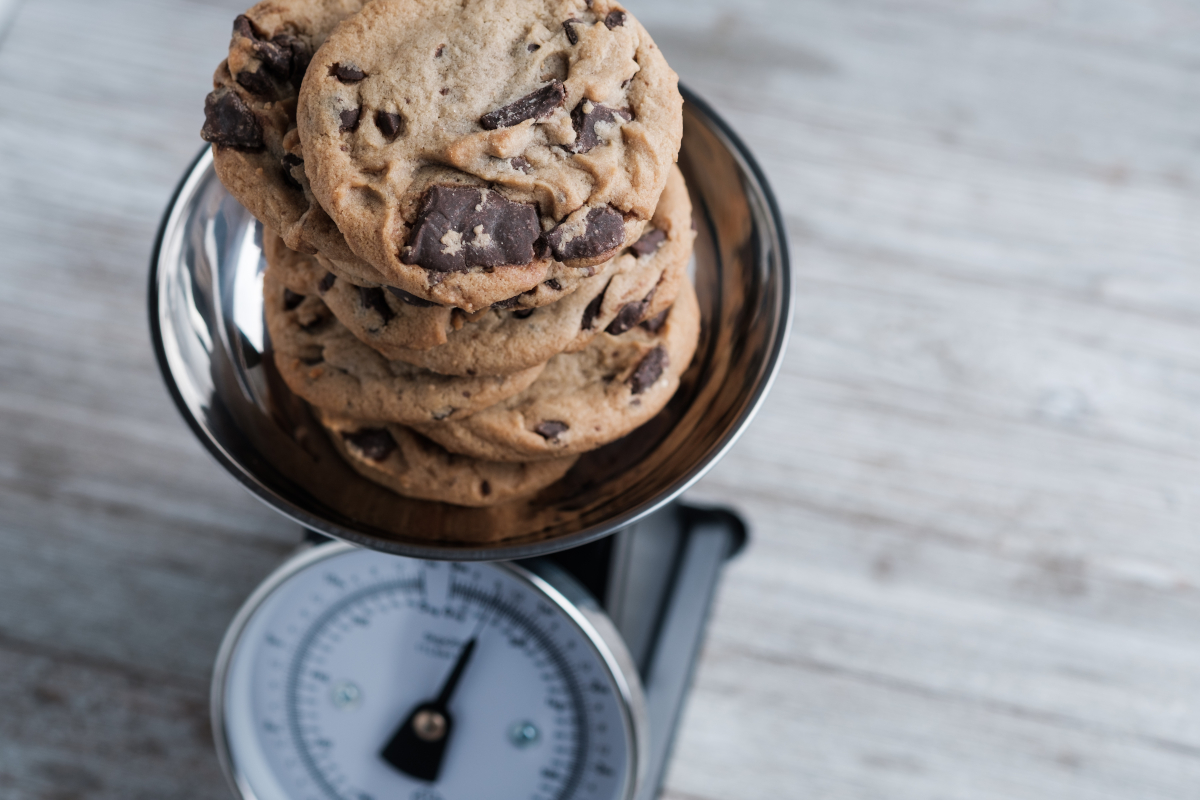
Have you ever caught yourself thinking about “good foods” vs. “bad foods”? If so, you’re not alone. This can become a harmful way to think about what you put in your body. Here are some ways to notice that thought pattern and retrain your brain.
The “Good Foods” vs. “Bad Foods” Cycle
Does this sound familiar?

If you raised your hand and said, “Yes, that is me!” join the club. So many of us are constantly told which foods are “good”, “bad” and either will or will not help us reach our goals.
Advertisement
We cling to these promises because maybe, just maybe, they are the magic key and the thing we didn’t have the last time we tried. Plus, it is human nature to want things to be black and white and as straightforward as possible.
But here is the truth: there is no such thing as “good” or “bad” food. And the sooner you start believing and practicing that mindset, the sooner you’ll reach your goals.
A quick caveat: It is important to note that there are some foods that are generally considered “unhealthy,” like processed sugars and trans-fats. We are not ignoring this truth! That being said, unless you have a medical condition or have very specific health goals, these foods can still be eaten now and then without detriments to your health.
The Problem with Food Morality
Have you ever said something like “I was so good today” or “I was so bad over the weekend” when referring to food choices?
Advertisement
When you view foods as “good” or “bad”, you’re automatically setting yourself up to go overboard on the foods you wouldn’t eat when you’re “being good”.
If you’ve ever thought, “Well, I’m already being bad, so I may as well go for it,” you know what I mean.
You’ll notice that these conversations and thought patterns equate the foods you choose with the kind of person you are. You are not a bad person because you eat a donut, and you are not a good person because you eat a salad.
Once you start to think of yourself as a bad person (or “not good enough”), it is easy to slip into unconscious choices that perpetuate that belief. Whether it is continuing to eat foods that don’t serve your goals, skipping the gym, or ignoring other healthy habits, when you think of yourself as “bad” because of your food choices, it takes away future healthy choices you would otherwise make.
So, if “good foods” vs. “bad foods” isn’t the mindset move, how can you make choices you’re proud of?
Advertisement
Effective vs. Ineffective Foods
Instead of “good foods” vs. “bad foods”, try thinking about “effective foods” vs. “ineffective foods”.
I know what you’re thinking, “isn’t that the same thing?” Nope, it’s not!
Here’s why: effective vs. ineffective is fluid and allows you to make the right choice for you and your goals in any situation. Need an example? Let’s use a donut…
Example A:
Advertisement
You’re stressed at work, and the day is flying by. You have fat loss goals and a prepped meal in the fridge. But a coworker brought in a box of Dunkin’ Donuts, and now they’re sitting in the breakroom. You’re super hungry. Grab that can-get-anytime donut without thinking, and eat it in two big bites. Now, you’re frustrated with yourself, have a bit of a stomach ache since you ate so fast, and figure, “Well, the day is shot… let’s go for donut #2.”
Example B:
You and your friends are on a girl’s or guy’s weekend. There is a little mom-and-pop specialty donut shop that has the BEST Yelp reviews. You decide to head over, pick from the selection and sit and enjoy it slowly with your friends. It tastes delicious, you leave the shop and go on with the rest of your day.
See the difference?
In Example A, the donut was an ineffective food that did not get you closer to your fat loss goals or help with your hunger. It actually led you to make another decision you weren’t proud of because you were frustrated with yourself. Plus, you could technically get that donut any time you wanted to. It was nothing special!
In Example B, you consciously enjoyed a donut with your friends. It was an effective way to curb your sweet tooth, enjoy the environment, and connect with the people you care about. Then, you moved on with your day and didn’t beat yourself up over your choice.
Same food, two VERY different experiences.
Advertisement
In every food scenario, you can ask yourself questions like...
- What are my current goals?
- Which foods are effective in getting me there right now?
- Which foods are ineffective in getting me there right now?
Then, you can prioritize based on your goals, the situation, enjoy your food more and stop beating yourself up over enjoying a treat!
We get it; mindset shifts like this can be hard. This is where hiring a 1:1 nutrition coach can come in handy. Our coaches are armed with the mindset strategies you need to help you treat yourself with respect and enjoy foods you love while reaching your goals.
Schedule a Free Intro Call
Working Against Gravity has led the macro tracking and health space for over a decade. Our team doesn’t just understand the science of nutrition—we’ve spent years mastering the art of tailoring it to fit your life. That means no cookie-cutter plans, just real strategies that have worked for over 30,000 people.
Schedule a free call with our team to learn how working with a 1-on-1 WAG coach will help you reach your goals.



